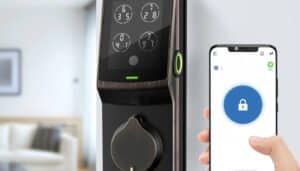They protect our valuables, secure our homes, and fortify our businesses, but how much do you really know about locks and keys? Check out these 40 fun facts about locks and keys.
1. The Oldest Known Lock
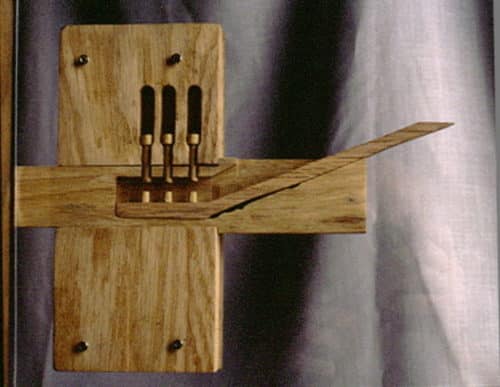
The oldest known lock was uncovered in the ruins of Nineveh, the capital of ancient Assyria.
The oldest known lock dates back to 4,000 years ago and was found in ruins near Ninevah. The predecessor of the Egyptian’s pin lock, this lock was primitive in nature. It is likely that locks older than this artifact have not been found because the most basic locks were a slab of wood that fit into a slot. If found by archeologists today, a slab of wood is unlikely to be recognized as a lock.
2. The Largest Padlock
Pavlovo Arts College in Russia holds the Guinness World Record for the largest padlock ever invented. The world record was awarded in 2003 after a class submission. The lock and key total 916 lbs, features intricate engraving, and a crest. The lock itself measures more than 56 inches tall and 41 inches wide.
3. Egyptians Created the First Pin Locks
Crafted from wood, pin locks were first used by Egyptians nearly 3,000 years ago. The key to these ancient locks was very large and required a grown person, historically a man, to operate. Unlike today’s locks and keys, this form of lock was used exclusively to secure doors and is thought to have been only available to the wealthy or government.
4. Skeleton Keys (Hint: No Relation to Haunted Houses)
There are many theories about skeleton keys and how they got their name, but the truth is that skeleton keys, which are master keys capable of working many locks, are called such because they are stripped down to their essential parts, or skeleton. Use of a skeleton key is not very mysterious despite its reputation. Locksmiths use skeleton keys today to open locks when the keys have been lost or misplaced.
5. Ceremony of Keys
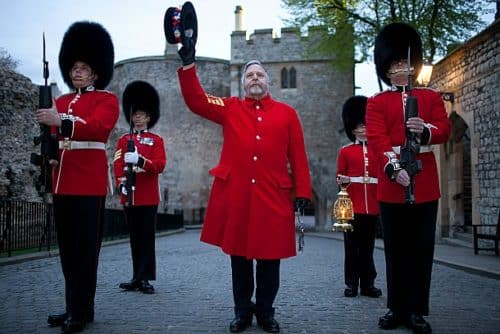
The ‘Ceremony of the Keys’ is the traditional locking up of the Tower of London.
The oldest ritual of its kind, the Ceremony of Keys occurs nightly at the Tower of London and tickets to the event are typically sold out for a year in advance. Every evening at 9:52 pm, guards exchange ceremonial words while in Tudor and lock the towers. The keys to the Tower of London are escorted back to the Queen’s residence by the Escort to the Keys. This ceremony has been held nightly since at least the 14th century, although some think it originated in the Middle Ages and has only been delayed once during the Second World War. It has never been canceled.
6. Lock Technology Advanced in Ancient Rome
Approximately 2,000 years after the Egyptian lock and key, ancient Romans advanced locking technology. Using steel, Romans created pin tumbler locks with steel springs. Capable of opening doors only from one side, Roman locks were far more intricate than their Egyptian predecessors. Roman locks and keys were also fashioned from iron and bronze. Historians theorize that one motivation for advancing lock technology was to keep women confined, as women of the day were often kept under lock and key.
7. Locks and Keys in Literature & Culture
Locks and keys have had a profound impact on culture and have been symbolically referenced by authors for centuries. A 17th-century English proverb states,”Wedlock is a padlock,” referring to the union of two people. Shakespeare wrote, “Were beauty under twenty locks kept fast, yet love breaks through and picks them all at last.” And, a German proverb goes, “Locks and keys are not made for honest fingers.”
8. Love Locks
Symbolic of love and marriage in many cultures, locks have been used as tokens of love for years. The Pont des Arts bridge in Paris, France has been a destination of lovers for years. Over time, hundreds of thousands of locks had been attached to the bridge’s grillwork and served as a testament to each couple’s love. Unfortunately, the sheer weight of the locks threatened the bridge’s structure and had to be removed, but the trend has been replicated at bridges around the world.
9. Rope Knots Replaced with Locks
Before locks and keys were widely available, other methods to secure doors and objects had to be used. Rope knots, typically the sailor’s Gordian knot, were employed to keep doors closed and tie down valuables. The Gordian knot was particularly useful as the creator could detect if it had been tampered with.
10. Harry Houdini
It may come as no surprise, but the famous escape artist Harry Houdini started his career as a locksmith. Houdini worked in a locksmith’s shop at age 11 and the young apprentice quickly learned how to pick any lock available at the time. Without lock and key technology, the world may have never experienced the man who some consider to be the greatest illusionist who ever lived.
11. Louis XVI
France’s former King Louis XVI was fascinated with locks. He made locks for the pure enjoyment of it and sometimes fashioned locks to use on furniture, like small chests. He had a forge in his Versailles apartments and was mentored by professional locksmith Francois Gamain who later betrayed him during the French Revolution.
12. Locks In Ancient China
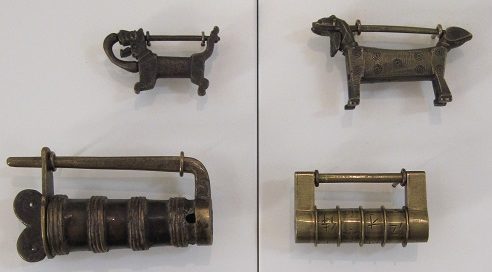
A small collection of antique Chinese padlocks.
There are two alternatives for the word padlock in Chinese characters. Much like other societies, China’s elite were the only ones who initially had access to locks and keys. Ancient Chinese padlocks are often fashioned in animal shapes, but Chinese literature does not offer clues as to design choice. Emperors had access to locks during the Jin dynasty, which lasted from 265-420 AD.
13. The Double-Acting Tumbler Lock
You can thank British inventor Robert Barron for inventing the double-acting tumbler lock, which is still around today. He invented the lock in 1778 while working as a professional locksmith.
14. James Sargent
The first key-changeable combination lock to stand the test of time was created by James Sargent in 1857, which influenced the safe manufacturing industry. Sixteen years later, Sargent perfected his time-delay locking mechanism and patented it. This invention was instrumental in enhancing bank vault security.
15. Keys Have a Cult Following
Since the creation of keys, they have been outfitted with designs. Everything from animals to jewels and woven metal to crafted flowers have been used to decorate a key’s handle. Those with an artistic eye for beauty have been attracted to keys, which has lead to some people wearing aesthetically pleasing keys on a necklace. There are pages on sites like Pinterest and Instagram devoted to elaborate collections of skeleton keys.
16. Lock Patents Skyrocket in America
Prior to the late 18th century, locks in the new world were imported from Europe because America did not have the capacity to manufacture locks. More than 3,000 types of lock mechanisms were patented between 1774 and 1920, with mass production of locks on American soil beginning in the mid-19th century.
17. The Federal Reserve Gold Vault
The Federal Reserve Bank of New York holds and protects gold bars in the basement of its Manhattan building. Built in the 1920’s, the vault is secured by a 90-ton, 9-foot tall steel cylinder guarding the only entrance. The cylinder is located within a 140-ton steel and concrete frame that is airtight and watertight. Once sealed, the frame is secured with four steel rods before a time-delayed locking mechanism is engaged. Each gold-containing compartment within the vault is secured by a padlock, two combination locks, and an auditor’s seal.
18. First U.S. Locksmith Company
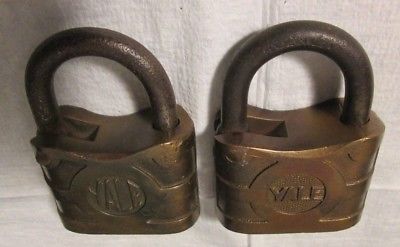
Antique padlocks made by Yale & Towne Manufacturing Company
Yale & Towne Manufacturing Company, launched in 1868, was the first known American locksmith company. Co-founder Linus Yale is known for inventing the tumbler lock. The company grew to export locks to various countries around the world before it closed in 2001.
19. Burglar Proof Vault Protects 19th Century U.S. Treasury
From 1863-1865, Isaiah Rogers served as Supervising Architect of the Treasury and designed a burglar proof vault for the Department of the Treasury. The unique design included a lining that was comprised of two layers of cast iron balls in between layers of wrought iron and steel plates. The concept behind the design was that if a burglar attempted to use a tool to penetrate the vault, the balls would move and the would-be criminal would not gain entry to the vault.
20. 2,000 Years to Open a Combination Lock?
A vault that once guarded the U.S. Treasury Department named Eureka was thought to be a manipulation-proof combination lock. Featuring five tumblers and a combination of letters and numbers, experts believe it would take someone 2,042 years to crack the code. Patented in 1862, the combination lock had 1,073,741,824 possible solutions.
21. The Lock Wizard of Thuringia
Walter Schlage was given this strange name for his magic-like lock skills. The German-born inventor developed a door lock that turned lights on and off in 1909, which was about a century before this technology was widely available in the consumer market. Schlage started his own company, the popular lock manufacturer, in 1920 with a starting capital of $30. It is now one of the most widely recognized security device companies in the world.
22. Locksmiths Can Be Feathered
A feat of will and skill, successfully picking a lock is difficult enough for humans, but how about for birds? A parrot named Magic may be the first and only known avian escape artist. In 2014, the bird picked a set of two padlocks placed on his cage to keep him inside, since he previously opened his cage and escaped with ease. On the lam as of the report, Magic has been referred to as Houdini’s spirit animal.
23. Fort Knox
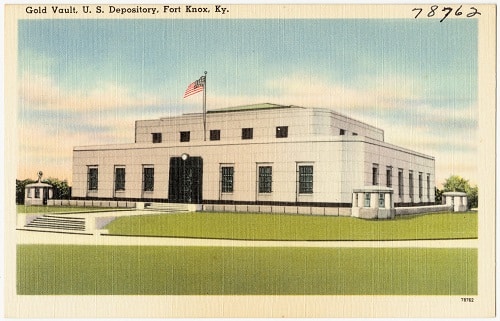
Fort Knox in Kentucky
Arguably the most secure building on the U.S. mainland, Fort Knox and its various security measures are shrouded in mystery. What is known about the building is that the front door is only accessed by Depository staff at random schedules. The staff must each enter a different combination code to unlock the door and the code changes daily. Because the facility secures an estimated $270 billion in gold and treasures, traditional lock and keys are not utilized as far as the public is aware.
24. The Unpickable Lock
The HYT chain lock is rumored to be unpickable because no one is known to have breached its defenses. The lock gets its name from its key, which is actually a chain. The chain has to be pressed into the lock with precision to ensure all pieces match before it will open. Even advanced locksmiths and skilled lockpicks are unable to open it. Most locksmiths and lock enthusiasts consider the HYT chain lock a collector’s item.
25. World’s Smallest Lock & Key
Though not yet verified by the Guinness Book of World Records, a Russian locksmith claims to make the smallest lock and key sets, and no one has yet to dispute the claim. Pavel Kulikov, a central Russia native, creates tiny locks with the smallest barely visible using the naked eye. Kulikov is credited with making a padlock so small that it fits around the eye of a needle. It is reported to weigh a hundredth of a gram even though it functions as a normal lock.
26. Jeremiah Chubb
In an effort to prevent thieves from picking locks, locksmiths in the 19th century were in competition to create more complex, secure locking mechanisms. Jeremiah Chubb succeeded and made a name for himself in the history of locks and keys. Known for creating the detector lock, Chubb fashioned a locking mechanism with a relocker. When a thief would try to pick the lock, the lock would jam until the original key or a special regulator key was inserted. Created in 1818, the lock remained unpickable until Alfred Charles Hobbs succeeded in 1851.
27. Alfred Charles Hobbs
Hobbs is a notable figure in lock and key history for his ability to pick the Chubb lock, but also his invention of the protector lock. Crafted in the early 1850’s, the protector (or moveable) lock required the transfer of pressure from the lock’s internal mechanisms to a fixed pin before it opens. By 1854, the protector lock was picked by an employee of Jeremiah Chubb.
28. Rare Story Locks
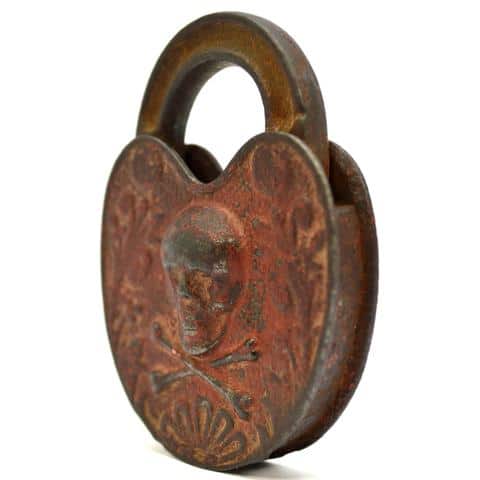
19th-century story lock with skull and crossbones
Considered rare and highly collectible, story locks were made in the late 19th century and featured intricate pictures on both sides. Some story locks depicted images of people, often in bizarre locations or positions, where the mouth would be the keyhole. Though it is rare to find antique locks available with their key, the lock alone may sell for $1,000 or more depending on its condition and collector.
29. Largest Key Collection
The Guinness Book of World Records verified that Lisa Large of Kansas City, Missouri has the largest collection of keys. It took Lisa two years to collect and catalog her keys. As of 2013 when she was awarded the world record, Lisa owned 3,604 keys.
30. Common Lock & Key Collection Themes
If you search for collectible locks and keys, you’re going to notice a trend in the types of locks and keys people like to collect. While it would be impossible to include all the themes, the most common are U.S. Post Office keys, U.S. military keys, logo keys made by Best Universal Lock Company, trick or puzzle locks, prison locks, and extremely rare numbered locks of traceable origin.
31. Yale Family
The Yale family, specifically Linus Sr. and Linus Jr., were instrumental in the development of high-security locks in the United States. Linus Sr. began manufacturing locks in 1840 and Linus Jr. is credited with the Monitor Bank Lock, which changed the way banks secure valuables and began the movement away from keyed locks in financial establishments. Locksmiths would agree that Linus Jr.’s most important accomplishment was the creation of the Yale cylinder lock.
32. Puzzle Locks
Perfect for those who loved Rubik’s cubes, puzzle locks require the operator to find the hidden trick to opening them. Some puzzle locks look deceptively like a normal padlock while others are actually chests or containers that feature a puzzle lock mechanism that must be conquered before they will reveal their contents. Puzzle locks sold today are usually replicas of ancient Indian locks.
33. John M. Mossman Lock Museum
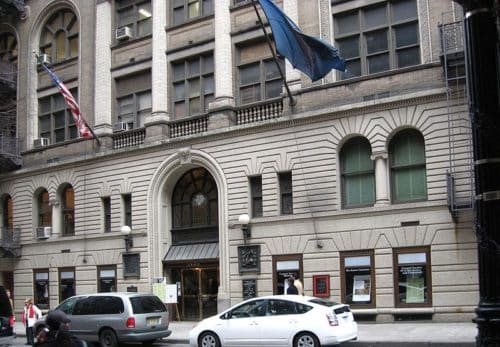
The John M. Mossman Lock Collection is housed at the General Society of Mechanics and Tradesmen of the City of New York building.
Situated in Midtown Manhattan, the John M. Mossman Lock Museum features one of the largest collections of locks publicly on display. The collection includes more than 370 bank and vault locks as well as ancient locks, keys, and tools. The museum’s artifacts include ancient Chinese locks, Egyptian wooden pin locks, and trunks with hidden keyholes.
34. Largest Known Lock Collection
According to the Lock Collectors Hall of Fame (although unverified by Guinness Book of World Records), Robert ‘Bob’ Dix has the largest lock collection totaling more than 25,000 locks. A resident of Ohio, Bob is a Trustee of the Lock Museum of America and a master of antique lock restoration.
35. Underwater Lockpicking
Ships have been sinking ever since the first one set sail, and the valuables kept on board has attracted the attention of treasure hunters for centuries. Charles Courtney, whose great, great uncle penned Twenty Thousand Leagues Under the Sea, earned his place in the history books by becoming the first person to pick a lock while 400 feet underwater.
36. Keyless Vehicle Entry Systems
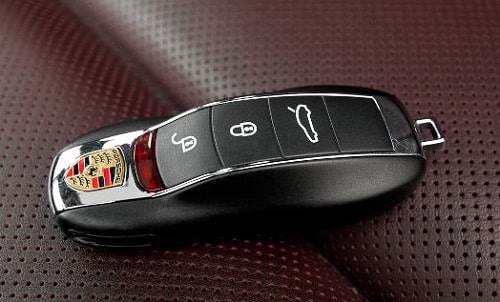
2012 Porsche Panamera S Hybrid keyless remote
Approximately three decades after the first car was invented, a power door locking system was introduced on a luxury Scripps-Booth. Not widely available until it was reintroduced to the market some 40 years later, power door locks dominated vehicle entry security until Ford introduced SecuriCode in 1980. This combination electronic lock was accessed outside the vehicle near the door’s handle and required the user to enter a special code before the door would open. SecuriCode was the predecessor to modern portable car key fobs, which nearly every car made in the past 20 years features.
37. Door Lock & Lockset Manufacturing Industry
The door lock and lockset manufacturing industry has blossomed since the industrial revolution. According to recent figures published by Ibis World, the industry as a whole earns $4 billion in revenue and represents 149 businesses.
38. Catherine the Great
Serving as Czarina of Russia in the late 18th century, Catherine the Great had one of the most elaborate collections of locks known in her time. She was fond of the intricate designs featured on many locks and often had them created to give as gifts. It is said that Catherine the Great once pardoned a locksmith who fashioned a necklace for her.
39. Mechanical Key Duplication
Key duplication is offered by locksmiths and, less reliably, local hardware stores. But prior to the development of mechanical key duplication machines, all duplicate keys had to be fashioned by hand. The first known mechanical key duplication machine dates back to 1917.
40. Viking Women Had the Power
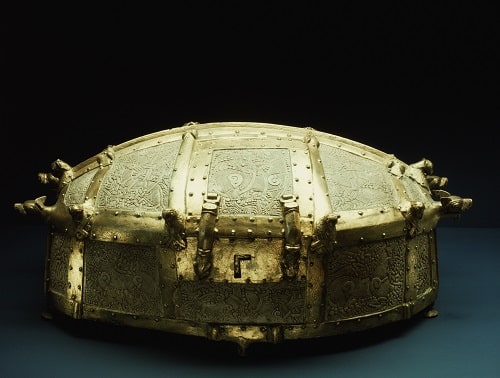
A replica of a Viking casket in gilded bronze and ivory. The intricately carved panels depict mythic beasts entwined in heavy patterning. The casket is banded with gilded bronze, animal and bird heads decorate the lip of the lid. National Museum, Copenhagen, Denmark.
Once married, Viking women were given the great responsibility of being the key holders for the family. A woman’s status when married was highly respected in Viking culture and women often wore their husband’s keys on their dress as a sign of their power and privilege. Archaeologists have found pieces of keys in the graves of Viking women, which is a testament to how much keys were treasured in the Viking Era.
Which number from our list of 40 fun facts about locks and keys is your favorite? Which facts surprised you and which did you already know? Let us know in the comments section!
Author: Sam Wilson
I am a licensed locksmith and the owner of 1-800-Unlocks. The goal of our locksmith directory is to provide a safe place for customers to find a local legitimate locksmith and avoid the pitfalls of being a victim of scamming locksmiths.





